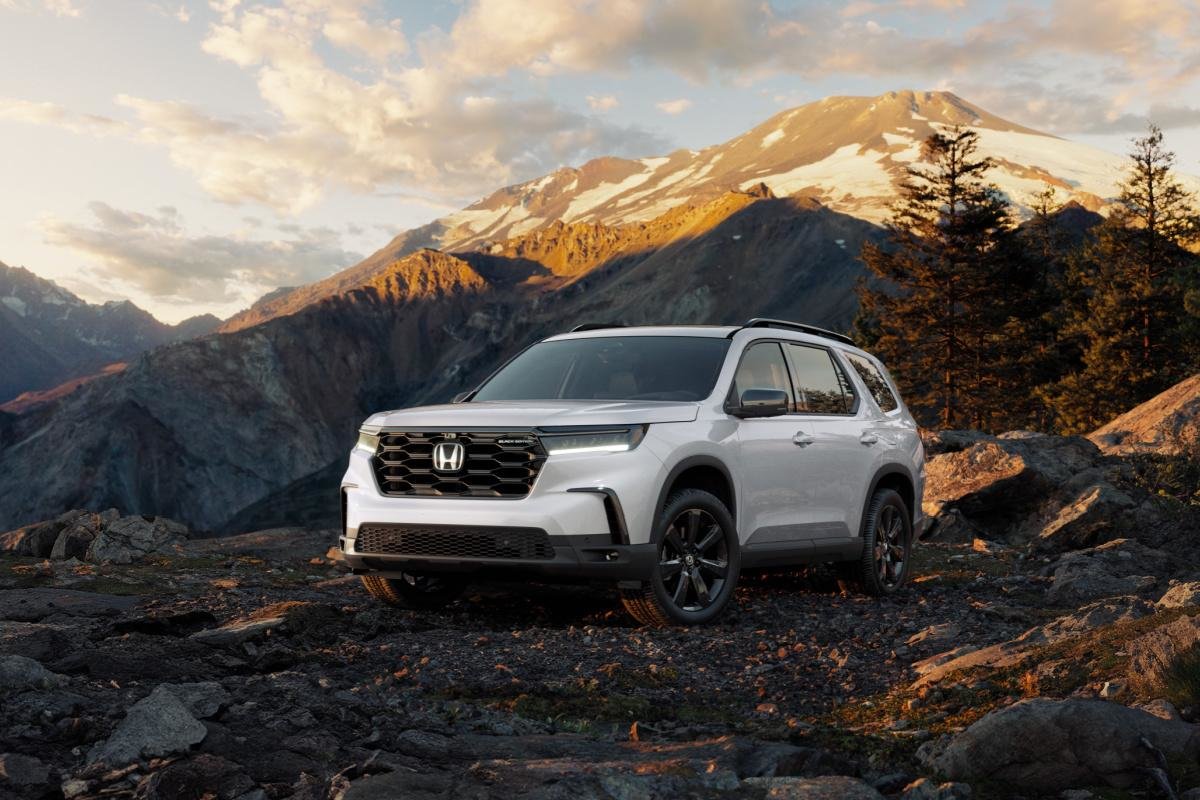Honda is one of those rare brands that doesn't need to dazzle you with unnecessary gadgets or outdated options to attract you to its vehicles. The Pilot is a competent SUV capable of meeting the needs of the majority of people. It's also a reliable and durable model. In short, there's not much to fault it for, and that's why it's so popular.
The Honda Pilot doesn't change much for 2025, which is entirely normal since the new generation arrived on the market last year. The model is still up to date and has everything it needs to please in my opinion. The new changes are mainly in terms of aesthetics with the Black Edition version.
Range and Pricing
The 2025 Honda Pilot has a starting price of $55,473, which is quite reasonable for an SUV of this size. Additionally, the Sport version is far from a base model, which makes it particularly appealing in my opinion. We step up the equipment level with the EX-L version, starting at $58,973. The Trailsport version is next at $61,973. This one offers a design and features more focused on off-road driving. For a more luxurious finish and all the technologies the model has to offer, you'll want to opt for the Touring version, priced at $65,723. Finally, the Black Edition version is at the top of the range with a starting price of $67,223.
Category and Competition
The Honda Pilot belongs to the category of midsize SUVs with three rows of seats, a very popular segment as it includes vehicles capable of replacing both a pickup truck and a minivan. It's often the choice of large families, and rightfully so. The Pilot has built a solid reputation over the years and continues to honor it this year.
Rivals: Chevrolet Traverse, Dodge Durango, Ford Explorer, GMC Acadia, Hyundai Palisade, Hyundai Santa Fe, Jeep Grand Cherokee, Kia Telluride, Mazda CX-90, Nissan Pathfinder, Subaru Ascent, Toyota Highlander, Volkswagen Atlas
Design and Technologies
Honda has radically changed its approach to vehicle design in recent years. Thus, the Pilot is more understated and elegant than ever. I must say I particularly like its robust look and simple finish. It might not be as eye-catching as some of its rivals, but that's precisely what will allow it to age better in my opinion. As for the rest, the manufacturer has made excellent choices in terms of wheels, but especially regarding the color palette.
The interior can be said to be much the same—not spectacular, but not bothersome either. The ergonomics have been well thought out, and the driving position is very comfortable. The Japanese manufacturer's SUV offers a wide range of amenities inside the cabin and lacks nothing in terms of equipment.
Let's talk a bit about technology since it's an important element for most buyers. The multimedia system is simple and effective, which is a good thing. As for the driving assistance technologies, they work well and aren't too aggressive, which is also a good thing.
Performance
Honda is a fairly conservative brand, which becomes evident when looking at the brand's range of engines. All models share a handful of mechanics. As for the 2025 Pilot, it's powered by a 3.5-liter V6 engine, a powertrain that some may call archaic. For my part, it's an engine I quite like as it meets the model's needs. Not to mention, it's one of the most reliable engines on the market, which can make all the difference for a long-term purchase.
The Japanese manufacturer's SUV's 3.5-liter V6 engine delivers 285 horsepower and 262 pound-feet of torque. Again, don't be fooled by the numbers here. I promise you it's plenty sufficient, and it's especially the way the Pilot delivers its power that makes it so enjoyable to drive. As for the transmission, we get a 10-speed automatic gearbox. It still needs a bit of work, but perhaps that's the only flaw of the model. However, one must fully exploit its potential to become aware of the issue. It's something you probably won't notice in everyday driving. Finally, the Japanese manufacturer's SUV comes standard with all-wheel drive.
Depending on the chosen version, the Pilot's average fuel consumption can vary between 11.0 and 11.8 L/100 km, making it quite thirsty. However, this is nothing unusual for a vehicle of this size.
Weaknesses
The behavior of the transmission can sometimes be unpleasant, especially in off-road driving situations. The Pilot is a bit thirsty, and it only offers one choice of engine.
Strengths
It's undoubtedly one of the most reliable and safe models in its category. The Honda Pilot has always tended to retain better resale value than average. It's elegant, comfortable, and lacks nothing in terms of equipment. Its driving is precise, and its road behavior is solid.
Signature Element
The Honda Pilot has always been a true benchmark in its category. It's a reliable, versatile vehicle that's highly appreciated by buyers in general.
Closing Words
The Honda Pilot has recently been modernized, but the Japanese manufacturer's SUV still feels like it belongs to another era. This isn't necessarily a bad thing, as buyers aren't taken aback, and the product remains consistent. In my opinion, this is what makes the brand strong. Okay, maybe you'll find something more modern elsewhere and have more choices in the end. Nevertheless, the Honda Pilot remains a safe bet and one of the only vehicles in its category that you can buy with your eyes closed without making a mistake.





